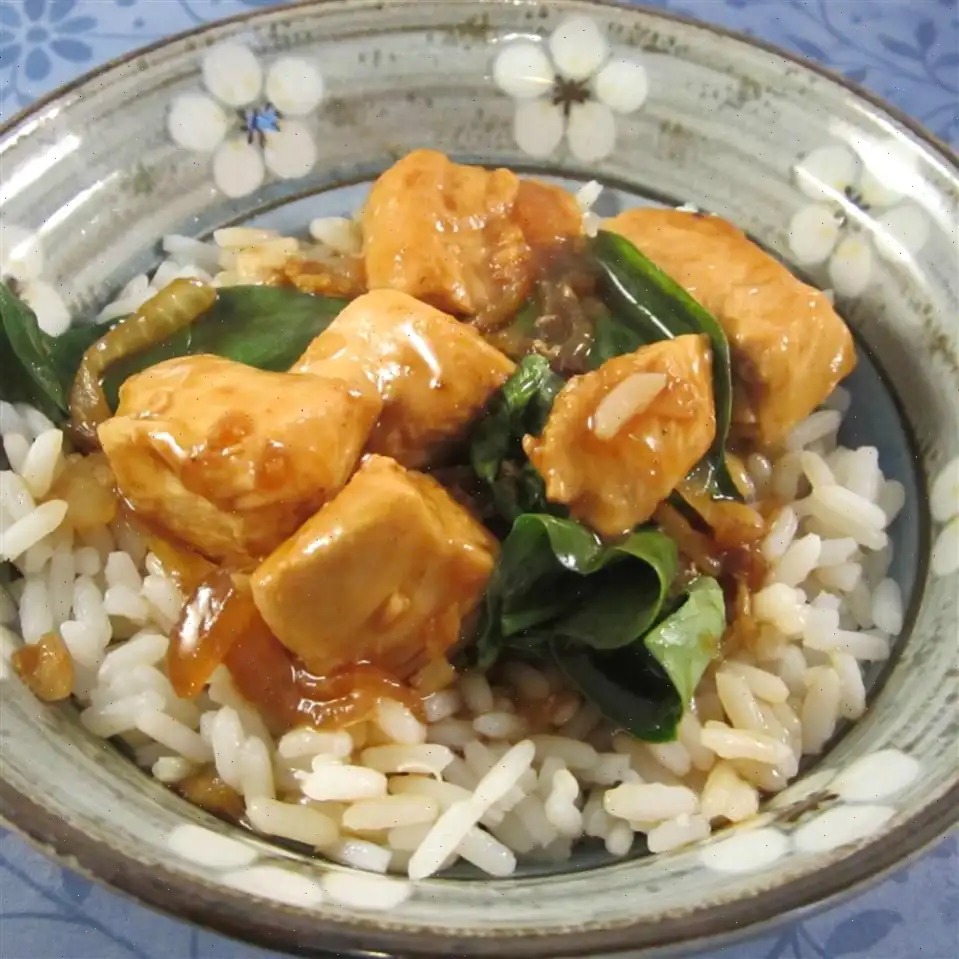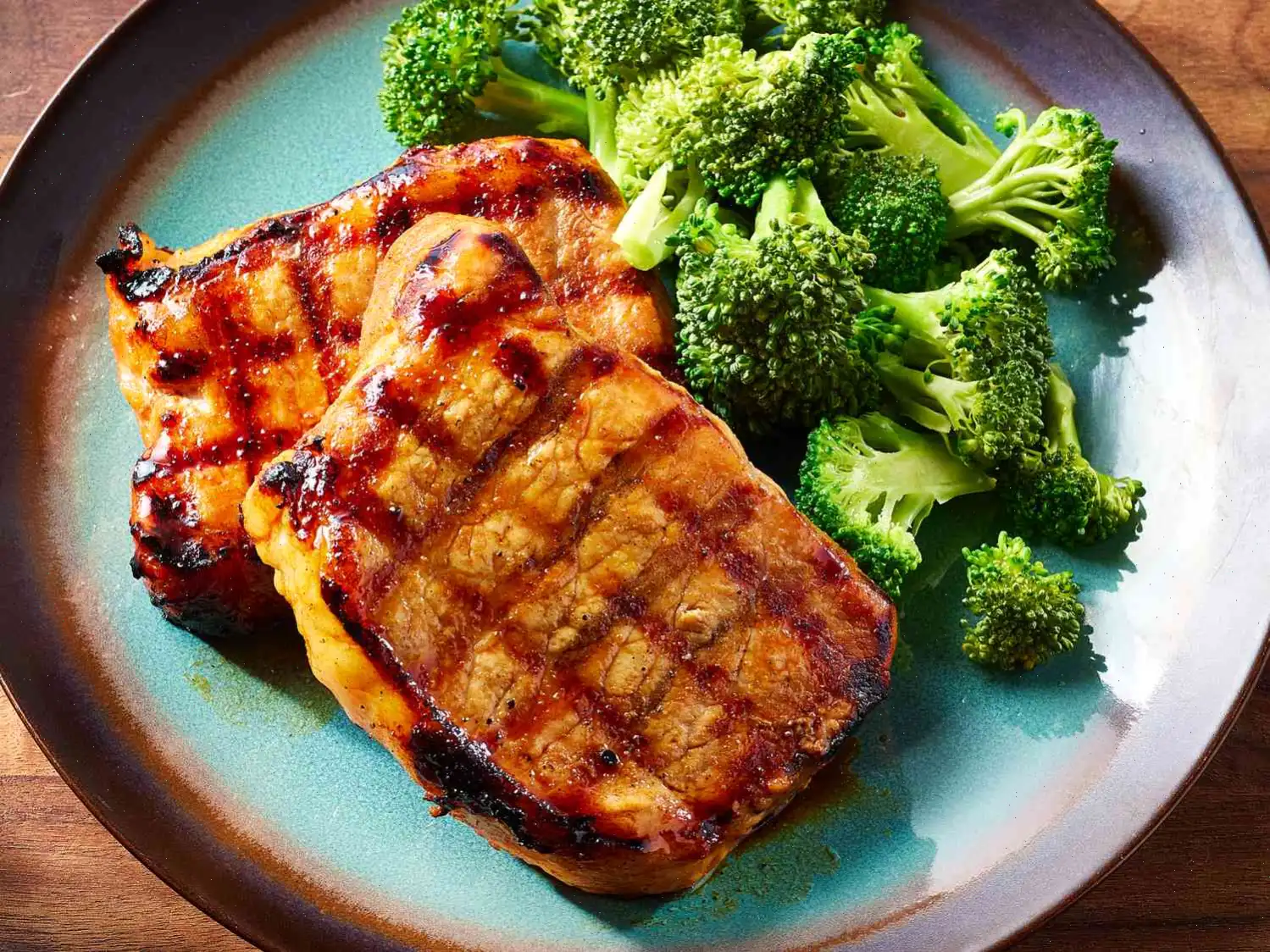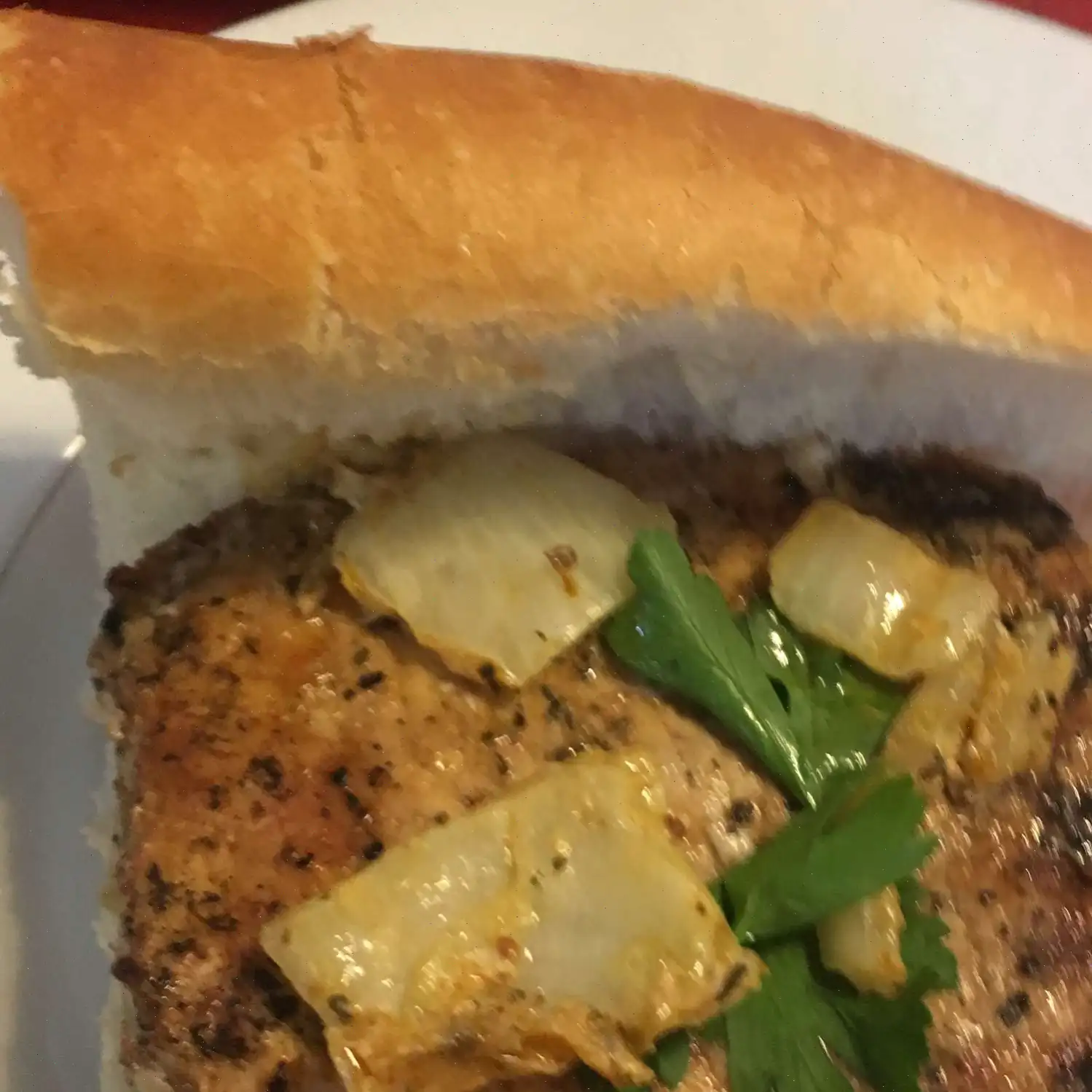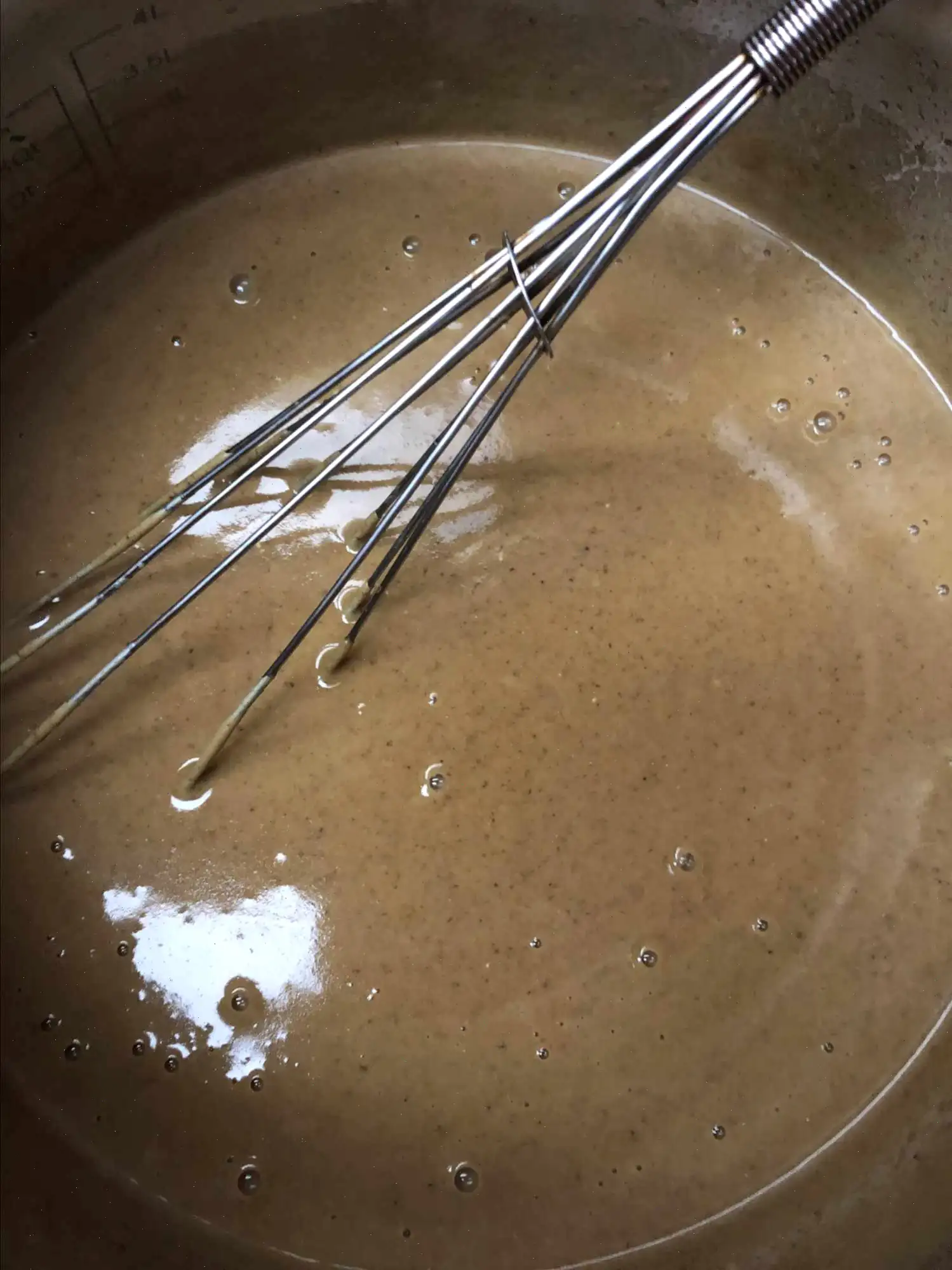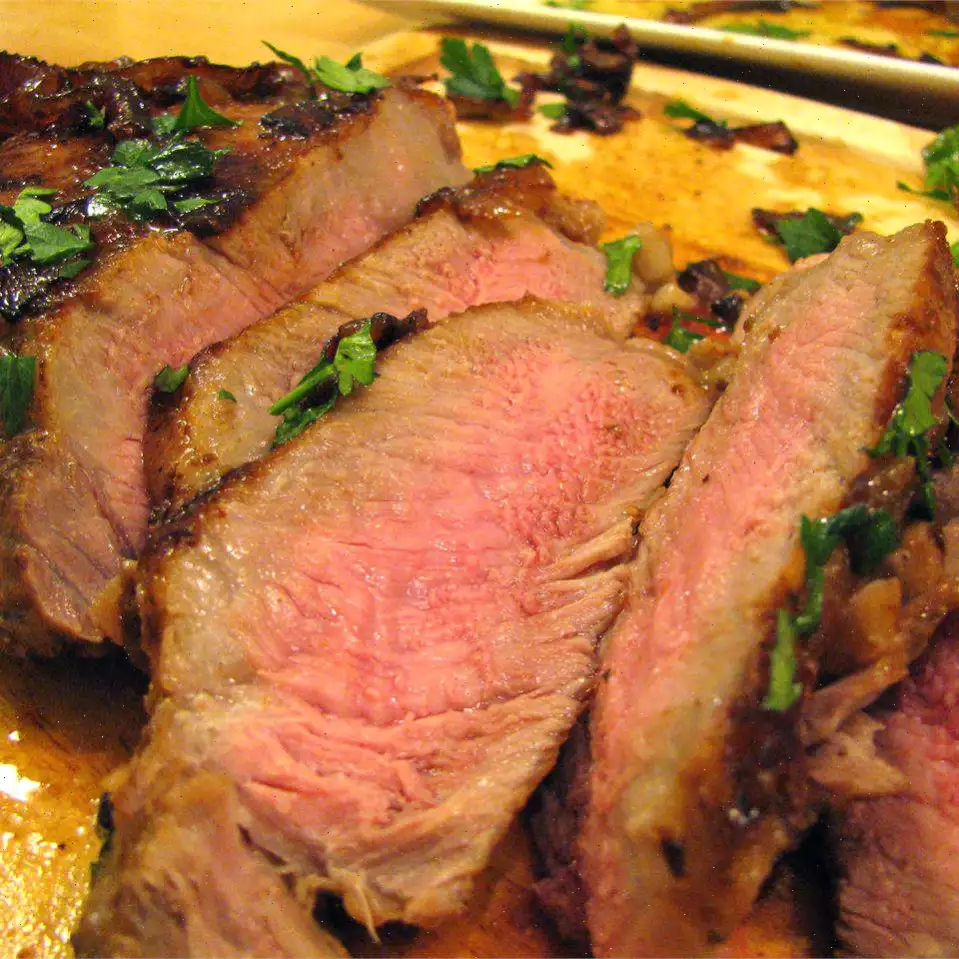
Authentic Thai Basil Chicken (Very Easy and Fast) Recipe
Ingredients
This recipe was developed at its original yield. Ingredient amounts are automatically adjusted, but cooking times and steps remain unchanged. Note that not all recipes scale perfectly.
Original recipe (1X) yields 2 servings:
- 2 tablespoons vegetable oil
- onion, sliced
- 3 cloves garlic, sliced
- 1 large skinless, boneless chicken breast, cut into 1-inch pieces
- cup oyster sauce
- 3 tablespoons soy sauce
- 1 pinch white sugar
- 2 small chile peppers, sliced (Optional)
- cup water
- cup fresh basil leaves
Directions
Step 1: Heat the vegetable oil in a wok or large skillet over medium heat.
Step 2: Add the sliced onion and garlic, cooking and stirring until fragrant, about 30 seconds.
Step 3: Add the chicken pieces to the pan and cook, stirring occasionally, until the chicken is no longer pink, about 5 minutes.
Step 4: Stir in the oyster sauce, soy sauce, and sugar, mixing well to combine.
Step 5: Add the sliced chile peppers, if using, and pour in the water. Cook, stirring occasionally, until the sauce has slightly thickened, about 3 to 5 minutes.
Step 6: Just before serving, stir in the fresh basil leaves to retain their vibrant flavor and color.
Cook's Note
If you prefer less spice, feel free to substitute red pepper flakes for the chile peppers or omit them altogether. The fresh basil is the key to this dish, so make sure not to overcook it!
Nutrition Facts (per serving)
- Calories: 304
- Total Fat: 16g (21% DV)
- Saturated Fat: 3g (14% DV)
- Cholesterol: 59mg (20% DV)
- Sodium: 1625mg (71% DV)
- Total Carbohydrates: 15g (5% DV)
- Dietary Fiber: 2g (8% DV)
- Total Sugars: 6g
- Protein: 26g (52% DV)
- Vitamin C: 117mg (130% DV)
- Calcium: 66mg (5% DV)
- Iron: 2mg (12% DV)
- Potassium: 484mg (10% DV)
* Percent Daily Values are based on a 2,000-calorie diet. Your daily values may be higher or lower depending on your calorie needs.
** Nutrient information is not available for all ingredients. Amounts are based on available nutrient data.
If you are following a medically restrictive diet, please consult your doctor or registered dietitian before preparing this recipe for personal consumption.

Thai Basil Chicken (Pad Krapow Gai) is a flavorful dish that has become a staple in Thai cuisine. Known for its savory, slightly spicy, and aromatic flavors, it is a dish loved by both locals and visitors alike. But what is the story behind this iconic recipe, and what makes it so unique? Let's explore.
History and Origins
The origins of Thai Basil Chicken can be traced to Thailand, where it is considered a traditional comfort food. It has a long history tied to the use of fresh herbs, especially Thai basil, which is integral to many dishes in the country. Thai basil, known for its slightly peppery, aniseed-like taste, is a key ingredient that gives the dish its distinct flavor. The recipe itself was likely developed in the bustling streets of Bangkok, where street food vendors began serving quick, flavorful meals to busy workers. Over time, this dish became a popular choice due to its simplicity and delicious taste.
Regional Variations
While Thai Basil Chicken is enjoyed throughout Thailand, there are regional variations that reflect the diverse culinary traditions of the country. In northern Thailand, for example, the dish may include a slightly sweeter version of soy sauce, while in the south, it may incorporate coconut milk or fish sauce for a richer flavor. The use of chilies varies as well, with some regions preferring a spicier kick, while others opt for a milder taste.
How It Differs from Similar Dishes
Thai Basil Chicken stands apart from other stir-fried chicken dishes due to the unique combination of fresh basil and the balance of salty, sweet, and spicy elements in the sauce. Unlike other chicken stir-fries that might rely heavily on soy sauce or oyster sauce, this dish features Thai basil as the star ingredient, imparting a fresh, herbal note. The use of fresh chilies and sugar further elevates the complexity of flavors, setting it apart from other Asian-style stir-fries like Chinese kung pao chicken or Korean spicy chicken dishes.
Where It Is Commonly Served
Pad Krapow Gai is typically served at Thai street food stalls, local restaurants, and even home kitchens across Thailand. It's a dish that can be enjoyed for lunch or dinner, often served with steamed jasmine rice or over noodles. Many restaurants around the world that specialize in Thai food also offer this dish, often customizing the spice level to suit the preferences of international diners. In Thailand, it is commonly enjoyed with a fried egg on top, adding an extra layer of richness to the meal.
Fun Facts About Thai Basil Chicken
Did you know that the basil used in this dish is not the same as regular sweet basil? Thai basil, also known as "krapow," has purple stems and a more intense, slightly spicy flavor that is crucial to the dish's authenticity. Additionally, while many people associate this dish with its bold flavors, it is traditionally prepared quickly, making it a perfect meal for busy days. The Thai name for the dish, "Pad Krapow Gai," literally translates to "stir-fried basil chicken," reflecting its primary ingredients and preparation method. Some variations of the dish also include pork or beef, but chicken remains the most popular choice due to its mild flavor that complements the herbs and spices.
Whether you're enjoying it in Thailand or making it at home, Thai Basil Chicken is a dish that embodies the vibrant and diverse flavors of Thai cuisine. Its simplicity, quick preparation time, and bold flavor make it an irresistible choice for any food lover.
FAQ about Authentic Thai Basil Chicken (Very Easy and Fast) Recipe
Comments
Richard Thomas
03/08/2023 03:32:42 PM
I absolutely adore basil and grow my own, hence I am constantly on the lookout for recipes that feature it. I've whipped up this dish twice already, and the second time around, I decided to toss in some frozen peas, which turned out to be a fantastic addition to an already fabulous and uncomplicated recipe. While I opted to skip the chili peppers, I did sprinkle some crushed red pepper flakes for a bit of heat, using what I had in my pantry. Paired with brown rice and spring rolls, this meal is definitely a winner in my book.
Tyler Hernandez
02/22/2024 06:07:46 AM
This dish was decent, but it lacked the nuanced flavors that are characteristic of authentic Thai cuisine. To elevate it to a 5-star level, it definitely needs more ingredients - specifically, a generous amount of ginger. Using Thai basil or Holy basil instead of regular basil is crucial to achieving the desired pungent basil flavor.
Amy Ramirez
10/02/2024 04:26:12 PM
Great and versatile base recipe. I've made it twice now and love adding my own twist to it. In my latest batch, I included freshly grated ginger along with the garlic, a dash of crushed red pepper and fresh ground black pepper to the sautéed chicken, a red bell pepper with the onion, chopped scallions with the vegetables and some with the basil at the end. I used regular basil from my garden and substituted jalapeños for chili peppers. After reading other reviews, I think adding peas would be fantastic. It's a fantastic recipe to use up any veggies you have on hand, I really enjoy making this dish.
Daniel Miller
10/22/2022 04:13:56 AM
I'm grateful that I followed my instincts and only used half of the oyster and soy sauce in this recipe. It turned out to be quite salty despite that. The addition of freshly grated ginger and white pepper definitely earned a thumbs up from me. The dish could have benefitted from more flavor rather than just salt as called for in the original recipe, but overall it was a decent starting point. I particularly enjoyed using my homegrown Thai basil in this dish. I couldn't help but wonder where the 194% of vitamin C per serving was coming from - quite a funny surprise!
Brandon Adams
07/12/2024 12:40:32 AM
Simple and delicious! I added mushrooms and plan to include more veggies next time. I used low-sodium soy sauce and half the amount recommended since we prefer less salt.
Kelly Turner
10/31/2022 12:23:55 PM
This recipe offers a good starting point but requires significant adjustments to elevate it. Based on feedback, I incorporated ginger, hoisin sauce, and garlic sauce, and swapped water for chicken broth. Including vegetables such as carrot sticks, mushrooms, snap peas, or broccoli would improve the dish. Additionally, the sliced onions seem out of place and would be better if diced instead.
Michelle Wright
05/07/2025 11:31:26 PM
This dish is incredibly delicious, and the kids devoured it happily. I decided to enhance it with some grated ginger, as I adore its flavor, and it truly elevated the dish. It's a perfect option for convenient weeknight dinners.
Thomas Ramirez
05/01/2025 11:14:37 PM
Great and simple recipe, just as advertised! My husband recommended that I leave a review and give it five stars because he loved it. I used regular fresh basil instead of Thai basil, and it tasted just like authentic Thai cuisine to us. This recipe has definitely earned a spot in my favorites list!


